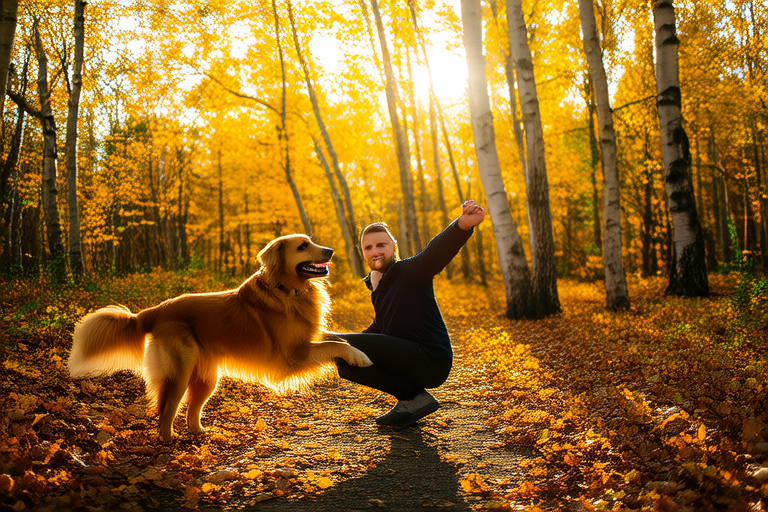Unleashing Joy: How Norwegians Embrace Pet Ownership
In the heart of Scandinavia, Norway stands as a country where nature and urban life coexist harmoniously. This unique blend creates an environment that is particularly conducive to pet ownership. The Norwegians have long embraced the joys of having pets, with a rich history and a strong commitment to responsible pet care. From ancient times to modern-day regulations, this article explores how Norwegians view and integrate pets into their lives.
A Historical Perspective on Pet Ownership in Norway
The bond between humans and animals in Norway dates back centuries. Historically, dogs were used for hunting and guarding, while cats were valued for their ability to control rodent populations. As society evolved, so did the relationship between humans and their pets. In the 19th century, pets began to be seen less as tools and more as companions. This shift is evident in the rise of pet-related literature and art during this period.
Legal Regulations Governing Pet Ownership
Norway has a robust set of laws designed to protect both pets and their owners. The Animal Welfare Act, enacted in 1974, outlines the responsibilities of pet owners and sets standards for animal care. These regulations cover everything from feeding and housing to health care and training. For instance, all dogs must be registered and microchipped, ensuring traceability and accountability. Additionally, there are strict rules regarding the importation of pets, aimed at preventing the spread of diseases.
Popular Pet Types Among Norwegians
Dogs and cats remain the most popular pets in Norway, but other animals such as birds, fish, and even reptiles are also common. According to recent surveys, over 60% of households own at least one pet. The Norwegian Forest Cat, a breed native to the country, is especially cherished. Known for its thick fur and independent nature, it thrives in the cold climate. Meanwhile, the Norwegian Elkhound, a versatile working dog, is another beloved breed. Their loyalty and intelligence make them ideal companions.
Veterinary Care Standards
The standard of veterinary care in Norway is high, thanks to a well-trained workforce and advanced facilities. All veterinarians undergo rigorous training, and continuing education is mandatory. Regular check-ups, vaccinations, and preventive treatments are encouraged to ensure pets stay healthy. Moreover, there is a growing emphasis on holistic approaches to pet care, incorporating nutrition, exercise, and mental stimulation into treatment plans.
Pets in Daily Life: Integration and Activities
Pets play a significant role in the daily lives of Norwegians. Many families take their dogs for walks in the vast forests or along the scenic fjords. Pet cafes and parks are becoming increasingly popular, offering spaces where people can enjoy coffee and treats with their furry friends. In addition, there are numerous pet-friendly events throughout the year, ranging from dog shows to cat festivals. These gatherings provide opportunities for owners to socialize and share experiences.
Environmental Impact of Pet Ownership
While pet ownership brings joy, it also has environmental implications. Responsible pet ownership includes proper waste management and sustainable feeding practices. Many municipalities offer biodegradable waste bags and recycling programs for pet food packaging. There’s also a growing trend toward eco-friendly pet products, such as toys made from recycled materials and organic treats. By being mindful of these factors, Norwegians can minimize the environmental footprint of pet ownership.
Cultural Significance of Pets in Norway
Pets hold a special place in Norwegian culture, symbolizing companionship, loyalty, and affection. They are often featured in folktales and legends, reflecting the deep connection between humans and animals. Today, pets continue to inspire art, music, and literature. For example, the famous Norwegian painter Edvard Munch included his beloved dog in several of his works, capturing the emotional bond between humans and their animal companions.
Personal Stories: The Joys of Pet Ownership
“My Norwegian Elkhound, Kari, is my best friend. She’s always by my side, whether we’re hiking through the mountains or relaxing at home. I’ve learned so much about responsibility and love from her,” shares Anne, a 45-year-old teacher from Oslo.
Anne’s story is just one example of the countless ways pets enrich the lives of Norwegians. Another interviewee, Lars, a 32-year-old IT professional, speaks fondly of his two cats, Sven and Ole. “They bring so much joy to our apartment. Watching them play is like watching a comedy show,” he says with a laugh.
Challenges and Responsibilities of Pet Ownership
Despite the many joys, owning a pet comes with challenges. Ensuring the safety and comfort of pets requires time, effort, and financial resources. Regular grooming, training, and socialization are essential for maintaining a happy and well-adjusted pet. Additionally, pet owners must be prepared to handle emergencies, such as injuries or sudden illnesses. However, the rewards far outweigh the challenges, as pets provide unconditional love and companionship.
Conclusion: A Bright Future for Pet Ownership in Norway
The future of pet ownership in Norway looks bright, with continued advancements in veterinary care, environmental sustainability, and cultural appreciation. As more people recognize the benefits of having pets, the country will likely see an increase in pet adoption and responsible ownership. By embracing the joys and responsibilities of pet ownership, Norwegians can continue to strengthen the bond between humans and animals for generations to come.
